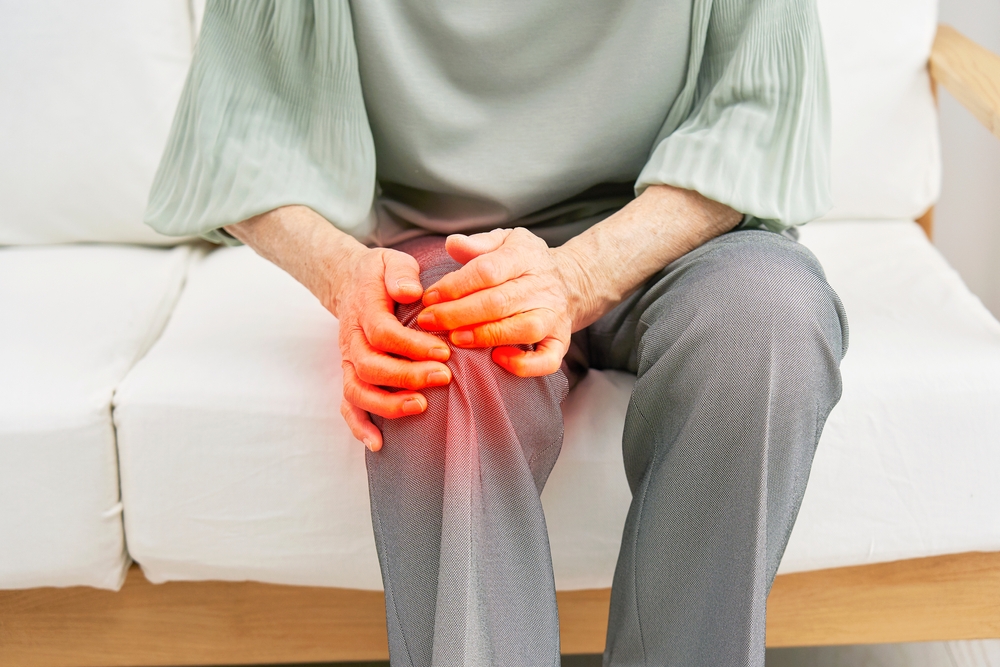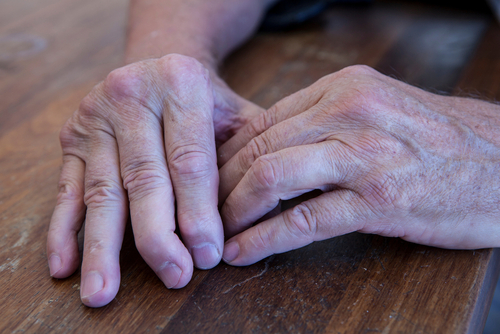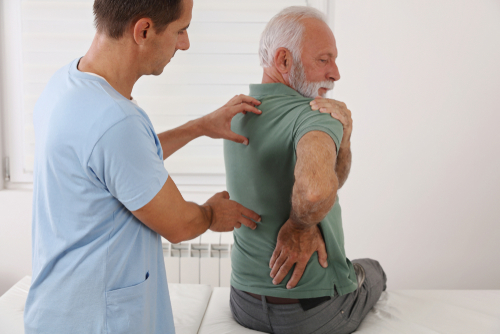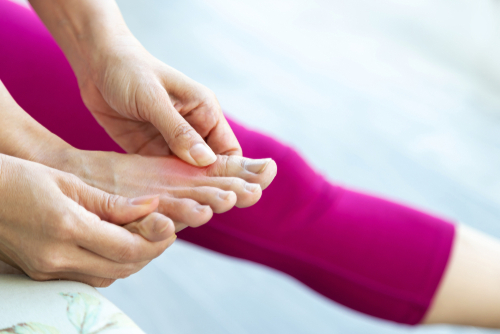Knee Pain in Elderly Adults

Most of us think that joint issues, and specifically knee pain, are an inevitable part of aging. While some aches and twinges may likely be age-related, knee pain is not a foregone conclusion for seniors. Diagnosing the cause of knee pain in elderly adults and properly treating knee pain when it does occur can help avoid or at least mitigate its discomforts. In this post, we’ll review some of the common causes of senior knee pain and knee pain treatment options.
Causes of Elderly Knee Pain
Some issues that can cause elderly knee pain include:
-
Osteoarthritis. Osteoarthritis is the most common type of arthritis to affect the knee. Osteoarthritis is a degenerative process where the cartilage in the joint gradually wears away. Rheumatoid arthritis is another form of arthritis that can affect the knee, although it tends to affect younger adults as well.
-
Tendonitis. Tendonitis is inflammation of the tendon generally caused by overuse or repetitive movement. Running, jumping, and cycling can all lead to tendonitis in the knee.
-
Mechanical issues. Mechanical issues is a fancy way to say that some sort of injury has led to knee pain. This could include a fall or blow to the knee, a sprain, or a twist. Sudden knee pain in elderly adults can most likely be attributed to some sort of mechanical issue.
-
Old injuries. Old injuries—for example, an ACL tear from high school that was seemingly completely healed—can begin to hurt again as we age. Tissue that was damaged in the past is more susceptible to instability, strain, and degeneration.
Elderly Knee Pain Treatment
The treatment for elderly knee pain depends on what is causing the pain. Your primary care doctor or an orthopedist can help you determine the cause of your pain and then work with you to come up with a treatment plan.
Download Our FREE Joint Pain Remedy Guide
Some common treatments for elderly knee pain include:
-
Medications. An over-the-counter pain relief medicine may be enough to calm your knee pain. Your doctor may also be able to prescribe a medication to treat the specific cause of the pain, especially if the pain is caused by osteoarthritis.
-
Physical therapy. Strengthening the muscles around the joint can help relieve knee pain. A physical therapist can help with specific exercises that will address the cause of the pain, particularly if it is tendonitis or a mechanical issue.
-
Injections. There are a few types of injections that can help with knee pain, again depending on the cause of the pain. A corticosteroid injection can help reduce pain and relieve the symptoms of arthritis. A hyaluronic acid injection can lubricate the joint and help reduce pain when moving. Platelet-Rich Plasma injections, a newer treatment, have been shown to reduce inflammation and promote healing for many different conditions.
-
Surgery. Arthroscopic surgery is typically the first type of surgery considered to repair injuries to the knee. It is minimally invasive and the recovery period is relatively short. Partial or total knee replacement surgery is an option when the pain or damage to the knee has become too much to bear. The replacement knee joint (or parts) are made of metal alloys and high-grade plastics so they last a very long time.
Medicine and technology have come a long way from the days when knee replacement surgery would require months of bedrest and rehab. Additionally, there are many more options to alleviate knee pain than there were in the past. If you or your elderly loved one does begin to experience knee pain, know that it is not something you simply have to live with, and there are many treatment options that can provide relief.
Subscribe
Date: February 15, 2024


